Shikonin Attenuates Cochlear Spiral Ganglion Neuron Degeneration by Activating Nrf2-ARE Signaling Pathway
- PMID: 35283722
- PMCID: PMC8908960
- DOI: 10.3389/fnmol.2022.829642
Shikonin Attenuates Cochlear Spiral Ganglion Neuron Degeneration by Activating Nrf2-ARE Signaling Pathway
Abstract
The molecular mechanisms that regulate the proliferation and differentiation of inner ear spiral ganglion cells (SGCs) remain largely unknown. Shikonin (a naphthoquinone pigment isolated from the traditional Chinese herbal medicine comfrey root) has anti-oxidation, anti-apoptosis and promoting proliferation and differentiation effects on neural progenitor cells. To study the protective effect of shikonin on auditory nerve damage, we isolated spiral ganglion neuron cells (SGNs) and spiral ganglion Schwann cells (SGSs) that provide nutrients in vitro and pretreated them with shikonin. We found that shikonin can reduce ouabain, a drug that can selectively destroy SGNs and induce auditory nerve damage, caused SGNs proliferation decreased, neurite outgrowth inhibition, cells apoptosis and mitochondrial depolarization. In addition, we found that shikonin can increase the expression of Nrf2 and its downstream molecules HO-1 and NQO1, thereby enhancing the antioxidant capacity of SGNs and SGSs, promoting cells proliferation, and inhibiting cells apoptosis by activating the Nrf2/antioxidant response elements (ARE) signal pathway. However, knockdown of Nrf2 rescued the protective effect of shikonin on SGNs and SGSs damage. In addition, we injected shikonin pretreatment into mouse that ouabain-induced hearing loss and found that shikonin pretreatment has a defensive effect on auditory nerve damage. In summary, the results of this study indicate that shikonin could attenuate the level of oxidative stress in SGNs and SGSs through the Nrf2-ARE signaling pathway activated, induce the proliferation and differentiation of SGNs, and thereby improve the neurological hearing damage in mice. Therefore, shikonin may be a candidate therapeutic drug for endogenous antioxidants that can be used to treat neurological deafness.
Keywords: Nrf2-ARE; auditory nerve damage; ouabain; shikonin; spiral ganglion cells.
Copyright © 2022 Du, Zhou, Shi, Xia, Wang, Guo, Hu, Zhang, Yang, Zhu, Teng, Liu and Zhao.
Conflict of interest statement
HD was employed by the company Qilu Pharmaceutical Co., Ltd. The remaining authors declare that the research was conducted in the absence of any commercial or financial relationships that could be construed as a potential conflict of interest.
Figures
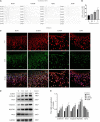
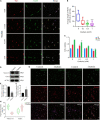
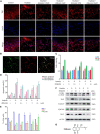
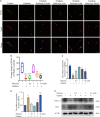
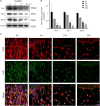
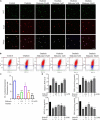
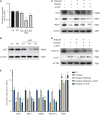
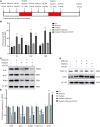
Similar articles
-
Exogenous neuritin restores auditory following cochlear spiral ganglion neuron denervation of gerbils.Neurosci Res. 2024 Mar;200:8-19. doi: 10.1016/j.neures.2023.11.001. Epub 2023 Nov 4. Neurosci Res. 2024. PMID: 37926219
-
Wnt Signaling Activates TP53-Induced Glycolysis and Apoptosis Regulator and Protects Against Cisplatin-Induced Spiral Ganglion Neuron Damage in the Mouse Cochlea.Antioxid Redox Signal. 2019 Apr 10;30(11):1389-1410. doi: 10.1089/ars.2017.7288. Epub 2018 May 4. Antioxid Redox Signal. 2019. PMID: 29587485
-
Atrial Natriuretic Peptide Promotes Neurite Outgrowth and Survival of Cochlear Spiral Ganglion Neurons in vitro Through NPR-A/cGMP/PKG Signaling.Front Cell Dev Biol. 2021 Jun 23;9:681421. doi: 10.3389/fcell.2021.681421. eCollection 2021. Front Cell Dev Biol. 2021. PMID: 34268307 Free PMC article.
-
Regulation of Spiral Ganglion Neuron Regeneration as a Therapeutic Strategy in Sensorineural Hearing Loss.Front Mol Neurosci. 2022 Jan 20;14:829564. doi: 10.3389/fnmol.2021.829564. eCollection 2021. Front Mol Neurosci. 2022. PMID: 35126054 Free PMC article. Review.
-
Protection of Spiral Ganglion Neurons and Prevention of Auditory Neuropathy.Adv Exp Med Biol. 2019;1130:93-107. doi: 10.1007/978-981-13-6123-4_6. Adv Exp Med Biol. 2019. PMID: 30915703 Review.
Cited by
-
Shikonin attenuates blood-brain barrier injury and oxidative stress in rats with subarachnoid hemorrhage by activating Sirt1/Nrf2/HO-1 signaling.Korean J Physiol Pharmacol. 2025 May 1;29(3):283-291. doi: 10.4196/kjpp.24.182. Korean J Physiol Pharmacol. 2025. PMID: 40254555 Free PMC article.
-
Shikonin inhibited glycolysis and sensitized cisplatin treatment in non-small cell lung cancer cells via the exosomal pyruvate kinase M2 pathway.Bioengineered. 2022 May;13(5):13906-13918. doi: 10.1080/21655979.2022.2086378. Bioengineered. 2022. PMID: 35706397 Free PMC article.
-
Identification of Phytogenic Compounds with Antioxidant Action That Protect Porcine Intestinal Epithelial Cells from Hydrogen Peroxide Induced Oxidative Damage.Antioxidants (Basel). 2022 Oct 28;11(11):2134. doi: 10.3390/antiox11112134. Antioxidants (Basel). 2022. PMID: 36358507 Free PMC article.
-
Elaboration and validation of a prognostic signature associated with disulfidoptosis in lung adenocarcinoma, consolidated with integration of single-cell RNA sequencing and bulk RNA sequencing techniques.Front Immunol. 2023 Oct 27;14:1278496. doi: 10.3389/fimmu.2023.1278496. eCollection 2023. Front Immunol. 2023. PMID: 37965333 Free PMC article.
-
Presbycusis: Pathology, Signal Pathways, and Therapeutic Strategy.Adv Sci (Weinh). 2025 Aug;12(29):e2410413. doi: 10.1002/advs.202410413. Epub 2025 May 11. Adv Sci (Weinh). 2025. PMID: 40349177 Free PMC article. Review.
References
-
- Albarakati A. J. A., Baty R. S., Aljoudi A. M., Habotta O. A., Elmahallawy E. K., Kassab R. B., et al. (2020). Luteolin protects against lead acetate-induced nephrotoxicity through antioxidant, anti-inflammatory, anti-apoptotic, and Nrf2/HO-1 signaling pathways. Mol. Biol. Rep. 47 2591–2603. 10.1007/s11033-020-05346-1 - DOI - PubMed
-
- Buchman C. A., Gifford R. H., Haynes D. S., Lenarz T., O’Donoghue G., Adunka O., et al. (2020). Unilateral cochlear implants for severe, profound, or moderate sloping to profound bilateral sensorineural hearing loss: a systematic review and consensus statements. JAMA Otolaryngol. Head Neck Surg. 146 942–953. 10.1001/jamaoto.2020.0998 - DOI - PubMed
LinkOut - more resources
Full Text Sources
Miscellaneous

